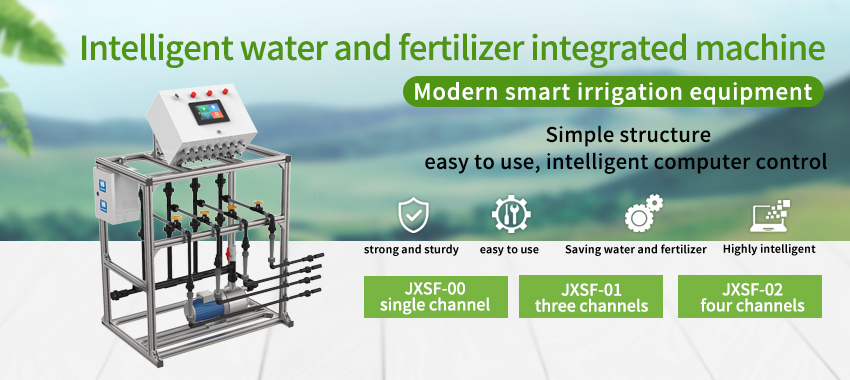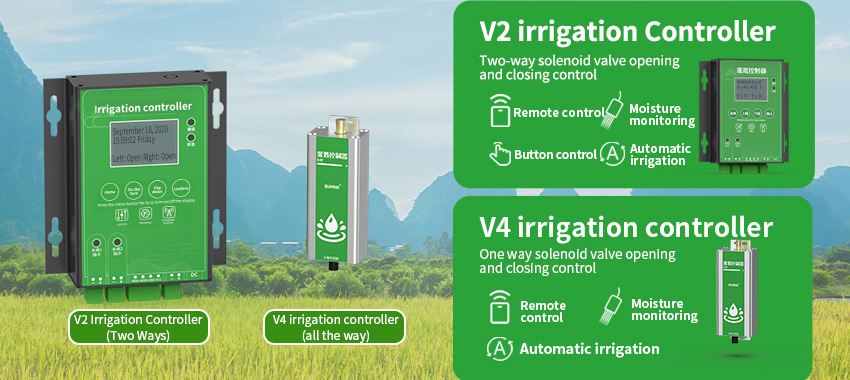Background:
Agricultural water consumption accounts for more than 60% of the total water consumption in China. Irrigation water accounted for the largest proportion of agricultural water, up to about 90%. China’s severe water shortage, the United Nations as one of the world’s 13 water poor countries. With the continuous development of China’s economy, the rational utilization of water resources is increasingly important. However, traditional agricultural irrigation has a huge waste of water resources. Developing water-saving irrigation has become an important direction to alleviate water resource shortage in China, and relevant policies are constantly promulgated to promote the rapid development of water-saving irrigation industry in China.

Introduction to irrigation today:
At present, the main water-saving irrigation methods include seepage control canal water delivery, pipe irrigation, micro-irrigation, drip irrigation, seepage irrigation, sprinkler irrigation and so on. Most of the water-saving irrigation methods in China adopt the technology of seepage control canal and surface irrigation. This technology saves about 20% water. Sprinkler irrigation and drip irrigation, which can save more than 50% water, are still in the promotion stage in China. In the global market, the United States has about 87 percent of the area under sprinkler and drip irrigation. Drip irrigation is used on more than 80% of Israel’s irrigated area. Sweden, The United Kingdom, Austria, Germany, Denmark and other countries have sprinkler irrigation and drip irrigation area proportion of more than 80%. Compared with these countries, China’s water-saving irrigation market still has a lot of room for improvement.
Market development of irrigation:
From the perspective of the global market of water-saving irrigation equipment, enterprises in Israel, the United States and other countries are in a leading position in the research and development and manufacturing level, and Israel’s Netafim, Plastor and other enterprises are in a monopoly position in the global high-end market of water-saving irrigation equipment. China began to introduce water-saving irrigation technology in the mid-1970s, and the water-saving irrigation industry entered a stage of rapid development in the late 1990s. In the 21st century, the number of enterprises engaged in the production of water-saving irrigation equipment in China is increasing, with more than 500 enterprises at present, and the market competition tends to be fierce.
According to the 2018 Investment Feasibility Analysis Report of Water-saving Irrigation Industry released by New Sijie Industry Research Center, China’s water-saving irrigation industry has greatly improved its production technology level, informatization level, product quantity and quality with the continuous accumulation of technology in the development process. However, most enterprises are small in scale, lack of capital strength, weak in r&d and innovation ability, and their products are mainly concentrated in low-end fields, resulting in serious homogeneity and fierce competition in the industry. However, the number of enterprises with high technical level and manufacturing process is small. Only a few enterprises, such as Dayu Water-saving, Runnong Water-saving and Xinjiang Tianye, have strong competitiveness in the mid-end market, while the high-end market is still monopolized by foreign enterprises.
Development of water-saving irrigation:
Water-saving irrigation technology is involved in agriculture, chemistry, physics, geography information system and the comprehensive application of disciplines, such as technology, industry technical barriers is higher, and the greater the water-saving irrigation project, the higher the qualification requirements for manufacturing enterprise, for new entrants to industry or insufficient strength of enterprise, the development of resistance is bigger, has the high barriers of qualifications. Therefore, the water-saving irrigation industry gradually presents a stronger development situation.
Industry analysts say that in China’s water-saving irrigation market, due to the price advantage, the middle and low-end areas are mainly occupied by local enterprises, while the high-end market is dominated by foreign-funded enterprises. With the continuous accumulation and improvement of technology, local leading enterprises begin to challenge the high-end market.

Jingxun Unimpeded water and fertilizer all-in-one machine introduction:
Water and fertilizer integration technology is a new type of agricultural technology that integrates irrigation and fertilization. The integration of water and fertilizer is to use the pressure system (or the natural decline of the terrain) to mix soluble solid or liquid fertilizers according to the soil nutrient content and the fertilizer requirements and characteristics of crop types, and the fertilization solution and irrigation water are mixed together through a controllable pipeline system. Water supply and fertilizer supply. After the water and fertilizer are dissolved, sprinkler irrigation is formed through pipes, spray guns or nozzles, which are sprayed evenly, regularly and quantitatively in the crop growth area, so that the soil in the main growth area is always loose and has a suitable moisture content.

Irrigation controller:
The self-developed irrigation controller can realize the control of irrigation solenoid valve and irrigation frequency conversion control cabinet. Irrigation controller can remotely control solenoid valve to save water. It can control the solenoid valve through buttons and cloud platforms. The irrigation controller is highly integrated and controls solenoid valves, frequency converters, etc. Use advanced LORA communication technology. Built-in battery, low power consumption, without mains electricity can run for a long time. The temperature and working status of the product can be monitored in real time. Support solar power supply. Good waterproof and sealing performance, suitable for all kinds of outdoor environment.